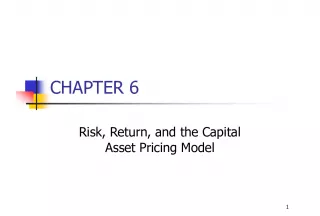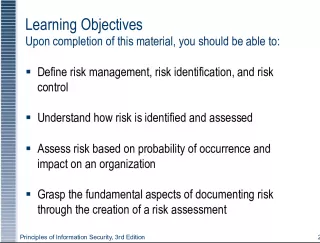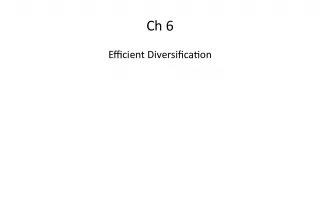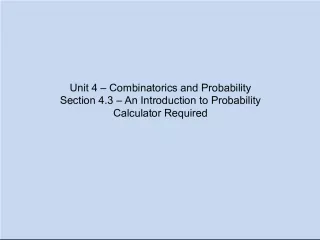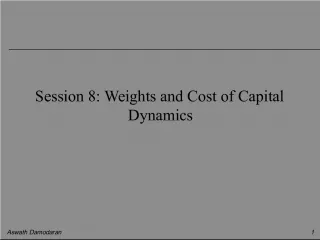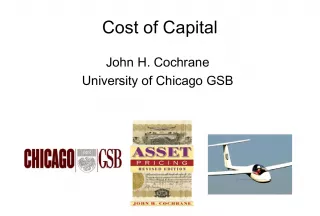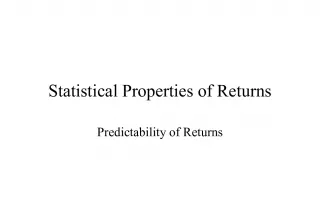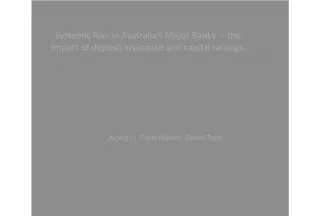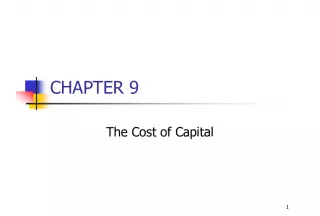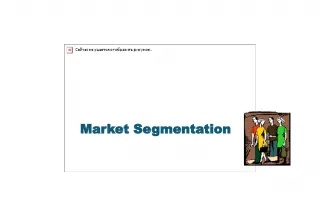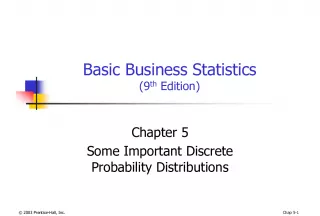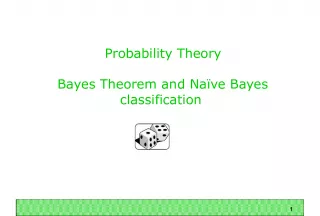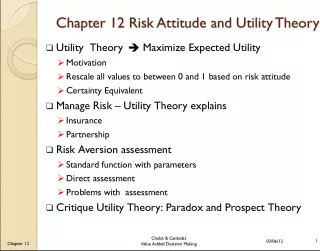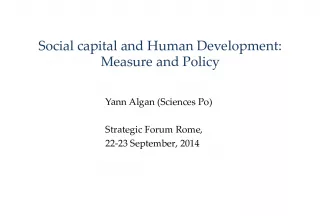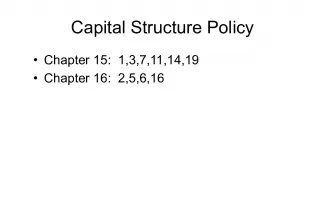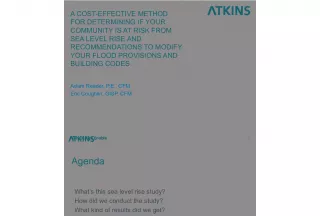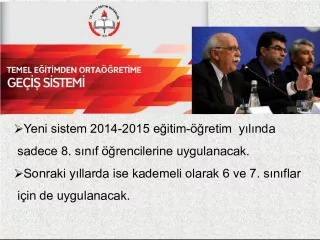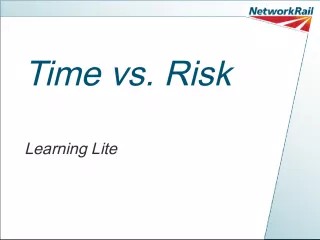Lessons from Capital Market History: Returns, Risk, and Probability


This chapter explores key concepts in capital market history, including dividend and capital gains yields, total return, nominal vs. real returns, risk premiums, average return, variance and standard deviation, and probability distributions. Through sample problems, readers will gain a deeper understanding of arithmetic vs. geometric averages and important lessons for investing in the stock market.
- Uploaded on | 0 Views
-
 ireland
ireland
About Lessons from Capital Market History: Returns, Risk, and Probability
PowerPoint presentation about 'Lessons from Capital Market History: Returns, Risk, and Probability'. This presentation describes the topic on This chapter explores key concepts in capital market history, including dividend and capital gains yields, total return, nominal vs. real returns, risk premiums, average return, variance and standard deviation, and probability distributions. Through sample problems, readers will gain a deeper understanding of arithmetic vs. geometric averages and important lessons for investing in the stock market.. The key topics included in this slideshow are capital market history, returns, risk, probability, investing,. Download this presentation absolutely free.
Presentation Transcript
1. Chapter McGraw-Hill/Irwin Copyright 2006 by The McGraw-Hill Companies, Inc. All rights reserved. 12 Some Lessons from Capital Market History Some Lessons from Capital Market History
2. Chapter 12 Index of Sample Problems Slide # 02 - 03 Dividend yield Slide # 04 - 05 Capital gains yield Slide # 06 - 07 Total return Slide # 08 - 09 Nominal vs. real returns Slide # 10 - 11 Risk premium Slide # 12 - 13 Average return Slide # 14 - 15 Variance Slide # 16 - 17 Standard deviation Slide # 18 - 23 Probability distributions Slide # 24 - 26 Arithmetic vs. geometric averages
3. 2: Dividend yield The common stock of Abaco Co. is expected to pay $1.60 in dividends next year. Currently, the stock is selling for $38.90 a share. What is the dividend yield?
4. 3: Dividend yield
5. 4: Capital gains yield Last year, you purchased shares of Baker and Sons, Inc. at a price of $28.42 a share. Since that time you have received $1.20 in dividends per share. Currently, the stock is selling for $31.18 per share. What is the capital gains yield?
6. 5: Capital gains yield
7. 6: Total return Zoma Enterprises pays $.80 a year as a dividend on their common stock. Currently, this stock sells for $28.12 a share. Last year at this time the stock was selling for $31.64 a share. What is the total return on this stock in dollars? What is the percentage total return?
8. 7: Total return
9. History of securities (p.367) Large company Small company Long-term Government bond Treasury bill inflation
10. 8: Nominal vs. real returns Last year, you purchased shares of Benson and Judges, Inc. stock for $13.50 a share. Since then you received $.50 per share in dividends. Today, you sold your shares for $18.20 a share. The inflation rate for the period is 3.5%. What is your nominal rate of return? What is your real rate of return?
11. 9: Nominal vs. real returns
12. 10: Risk premium Assume that the following are the average annual returns for the past decade: Large-company stocks 9.6% Long-term corporate bonds 5.8% U.S. Treasury bills 2.5% Inflation 1.9% What is the risk premium on large-company stocks for this time period?
13. 11: Risk premium
14. 12: Average return A stock returned 4.8%, 9.3%, 21.6%, -13.2% and 0.4% for the past five years, respectively. What is the average rate of return for the past five years?
15. 13: Average return
16. 14: Variance A stock returned 4.8%, 9.3%, 21.6%, -13.2% and 0.4% for the past five years, respectively. What is the variance?
17. 15: Variance Actual Return Average Return Deviation Squared Deviation .048 .0458 .0022 .0000 . 093 .0458 .0472 .0022 .216 .0458 .1702 .0290 -.132 .0458 -.1778 .0316 .004 .0458 -.0418 .0017 Totals .0000 .0645
18. 16: Standard deviation A stock returned 4.8%, 9.3%, 21.6%, -13.2% and 0.4% for the past five years, respectively. The variance is .016125. What is the standard deviation?
19. 17: Standard deviation The variance, 2 , as computed previously, is .016125.
20. 18: Probability distributions A stock has an average rate of return of 4.58% and a standard deviation of 12.70%. Assume that the returns are normally distributed. What range of returns would you expect to see 68% of the time? 95% of the time? 99% of the time?
21. 19: Probability distributions
22. 20: Probability distributions
23. 21: Probability distributions
24. 22: Probability distributions A stock has an average rate of return of 12.9% and a standard deviation of 15.3%. Assume the returns are normally distributed. What is the probability that you will lose more than one-third of your investment in this stock in any one year?
25. 23: Probability distributions The probability of losing more than one-third (33%) of your investment in this stock in any one year is less than of 1%. 68% .129 (1 .153) -2.4% .129 + (1 .153) 28.2% 95% .129 (2 .153) -17.7% .129 + (2 .153) 43.5% 99% .129 (3 .153) -33.0% .129 + (3 .153) 58.8%
26. 24: Arithmetic vs. geometric averages A stock has the following year-end prices and dividends. Year Price Dividend 0 $38.16 --- 1 $39.43 $.60 2 $38.04 $.62 3 $45.09 $.65 4 $44.10 $.70 What are the arithmetic and geometric returns for this stock?
27. 25: Arithmetic vs. geometric averages Year Price Dividend Annual return 0 $38.16 --- --- 1 $39.43 $.60 ($39.43 - $38.16 + $.60) $38.16 = 4.90% 2 $38.04 $.62 ($38.04 - $39.43 + $.62) $39.43 = -1.95% 3 $45.09 $.65 ($45.09 - $38.04 + $.65) $38.04 = 20.24% 4 $44.10 $.70 ($44.10 - $45.09 + $.70) $45.09 = -0.64%
28. 26: Arithmetic vs. geometric averages Annual returns: 4.90%, -1.95%, 20.24% and -.64%
29. Arithmetic average: good for guess the return of one period: optimistic Geometric average: good for guess the return of long term: pessimistic
30. Capital market efficiency Degree of reflecting information Efficiency Market Hypothesis (EMH) Strong form: all available information Semistrong form: all public information Weak form: current price reflect all past stocks price
31. Chapter McGraw-Hill/Irwin Copyright 2006 by The McGraw-Hill Companies, Inc. All rights reserved. 12 End of Chapter 12 End of Chapter 12
